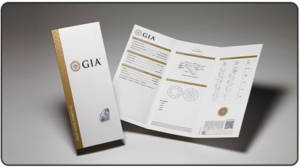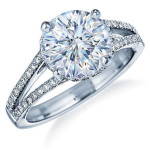Each rough diamond is carefully studied (1) and eventually marked (2) for sawing (3).
ROUGH TO POLISH



Bruting process:
Two diamonds are set onto axles spinning in opposite directions, which grind against each other for rounding their shapes (4).

Polishing or faceting:
This is the last process and consists of polishing facets onto the diamond (5).

The name diamond is derived from the ancient Greek “adamas” meaning unbreakable, untamed and unconquerable. Diamonds have been treasured as gemstones ever since they were discovered.
In today’s modern age, the mere mention of the word “diamond” continues to evoke images of elegance, style and glamour. Diamond glitters, sparkles and dazzles. It symbolizes purity and strength.

A diamond is perfectly suited for daily wear because of its resistance to scratching – perhaps contributing to its popularity as the preferred gem in engagement or wedding rings.
Diamonds are exceptional and distinctive. No two diamonds are alike. Yet, all diamonds have certain features in common that allow experts to compare and evaluate them.

Four main factors are considered when judging a diamond’s quality and value.
They are the diamond’s 4C’s:
Carat, Color, Clarity and Cut
Gemologists use state-of-the-art equipment in order to accurately assess the diamond's 4C’s and all other relevant characteristics. Each diamond is scientifically analyzed in order to identify synthetics, simulants and possible treatments.




